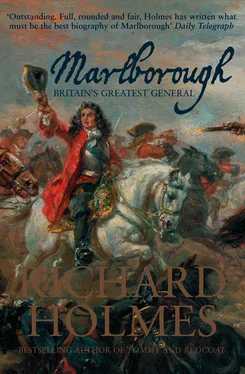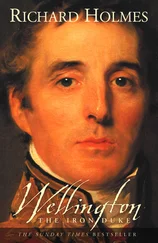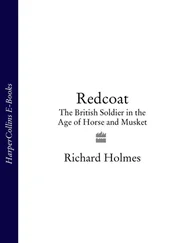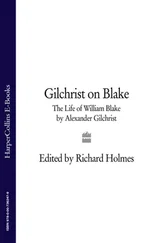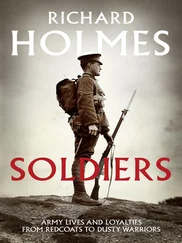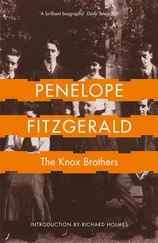Given Feversham’s assumption, shared by Churchill, that the rebels might try to get their horse away, probably to the north, Theophilus Oglethorpe had put a small patrol out onto the Bridgwater – Bristol road, and posted another party on the Langmoor Rhine, and then rode up to the top of Knowle Hill. Feversham visited ‘his sentries, together with his grand and out guards’, at about eleven and then retired to his quarters in Westonzoyland, where he was to sleep on a camp bed set up in the parlour at Weston Court. He had every reason to turn in with confidence: perhaps 250 of his seven hundred horse and dragoons were now on duty, and he had taken all reasonable precautions against surprise.
His infantry battalions were camped in order of seniority. Dumbarton’s was the senior line regiment in the field but junior to the guards regiments present, two battalions of 1st Foot Guards and a single battalion of the Coldstream. 74 However, Dumbarton’s took station at the post of honour on the right of the line, almost certainly because it furnished the infantry grand guard, with perhaps a hundred of its soldiers standing to their arms all night. This party would provide the little force’s right markers if the infantry had to assemble during the night. The vicar of Chedzoy maintained that one of Dumbarton’s company commanders was sure that the rebels would attack, and had paced out the ground between tents and Bussex Rhine and warned his men to be ready.
There seems, however, to have been little sense that there was any real danger. Edward Dummer, a gunner in the artillery train, recorded that ‘a preposterous confidence of ourselves with an undervaluing of the rebels that many days before had made us make such tedious marches had put us into the worst circumstances of surprise’. Writing in 1718, an officer of the Blues declared that ‘On Sunday night most of the officers were drunk and had no manner of apprehension of the enemy.’ 75 We may doubt whether a tiny village like Westonzoyland actually contained sufficient alcohol to induce widespread drunkenness, even if the royal army was unfamiliar with the foot-tangling attributes of the local cider. But it is safe to assume that, apart from the occasional edgy Scot, most of Feversham’s officers yawned confidently to their beds.
Monmouth’s army moved out of Bridgwater on the Long Causeway at about eleven o’clock that night. It did not take the Short Causeway out to Chedzoy, the easiest route onto the moor, but turned eastwards in the direction of Peasy Farm to march parallel with the Black Ditch towards the royal army’s right flank. Theophilus Oglethorpe, up on Knowle Hill and preoccupied with the Bristol road, saw nothing of this. To make matters worse, after dark he had pulled in his standing patrol from the Langmoor Rhine, leaving a gap through which Monmouth slipped. He discovered what had happened some time later, when he took a patrol towards Bridgwater to satisfy himself that the rebels were still there. He just missed the tail end of Monmouth’s marching army, and only when he reached Bridgwater did he learn that the rebels had left the town.
At about the same time that Oglethorpe realised the scale of his failure, Monmouth was getting his men across the Langmoor Rhine, and confirming his plan with his senior commanders. Lord Grey was to take the cavalry over the northern plungeon (ford) over the Bussex Rhine, swing round into Westonzoyland and spread havoc through the royal camp. The infantry, marching onwards in column, would halt opposite the royalist foot, turn left into line, and attack a camp already rocked by the irruption of the rebel horse. It was not a bad plan, and even in the small hours of 6 July it might still have worked. However, as the rebels picked their way over the Langmoor Rhine in the misty half-light, a shot rang out.
We cannot be sure who fired it. Captain John Hucker of Monmouth’s horse maintained at his trial that he shot deliberately, to betray the attack, but his tale was as unconvincing then as it is now, and they hanged him anyway. It was probably one of Compton’s troopers, out creasing the moor, who fired his pistol in the air the minute he saw columns of rebel infantry on the move, and then rode towards Chedzoy to find Compton himself. Compton sent at least one trooper to camp to raise the alarm, and as he spurred towards Westonzoyland he collided with part of the rebel horse. Lord Grey had predictably missed the northern plungeon and had turned north of the Bussex Rhine rather than south of it, so was now separated from the royal camp by a belt of water which was effectively impassable to poorly trained cavalry in the dark. 76 There was an inconclusive scuffle in which Compton was shot in the chest, but the damage was done.
Behind the Bussex Rhine the king’s infantry had turned out of their tents to form up on the open ground south of the ditch. Their drums were now beating. Some regiments had been issued with new flintlock fusil, but others had the older matchlock, and the glow of match-cord flickered out along the line as the corporals, whose job it was to keep a light handy, lit their men’s matches. The official account tells of ‘my Lord Churchill having command of the foot and seeing every man at his post doing his duty’, and the infantry’s swift response to the alarm speaks loudly for its training and discipline, and his precautions. All chance of surprise, and with it Monmouth’s battle, was now lost.
Most of Grey’s horsemen crossed Dumbarton’s front unengaged by yelling out that they were militia horse under Albemarle. But when challenged by 1st Foot Guards (commanded by Monmouth’s half-brother the Duke of Grafton), some replied with the rebel field-word ‘Monmouth and God with us,’ and both battalions of 1st Foot Guards in turn replied with a volley, as did the right-hand companies of the Coldstream. This was too much for Grey’s men, who broke back across the moor, some of them colliding with the two rearmost regiments of foot, the Blue and the White, which were forming up after crossing the Langmoor Rhine. The three remaining regiments, Red, Yellow and Green, managed to get into line ‘but not in good order’, just across the Bussex Rhine from the royal army’s right flank.
The rebel gunners had trundled three small field guns all the way from Bridgwater, and now swung them into action between the Yellow and Green regiments towards the left of Monmouth’s line. The rebels got to within ‘half musket shot’ of their enemies (Nathaniel Wade thought that the Red Regiment was within thirty or forty paces of the Bussex Rhine), stood their ground, and fired. Monmouth’s cannon, manned by Dutch professionals, made better practice than his infantry, most of whom, like many soldiers in battle for the first time, shot too high. Sending blasts of case-shot across the Bussex Rhine, the guns were soon doing serious damage to Dumbarton’s men and the right-hand battalion of 1st Foot Guards. Churchill, having satisfied himself that his line was properly drawn up, sent one troop of the Royal Dragoons across to the southern plungeon, and directed Lord Cornbury to take two more across to the right to support Dumbarton’s. He also ordered three light field guns to take station on the right of Dumbarton’s and pushed another three forward to join the first battalion of 1st Foot Guards. There is a pleasing story that Dr Peter Mews, Bishop of Winchester, a Dorset man who was accompanying the army, used his carriage horses to tug at least one of the guns into action. He had been a royalist captain during the Civil War and had fought in Holland after it, and was just the sort of prelate who saw no harm in praising God and passing the ammunition, but it is impossible to confirm the tale.
Cornbury’s dragoons, probably dismounted, were in action against the Green regiment on Monmouth’s left. They hit its colonel, Abraham Holmes, killing his horse beneath him and leaving him badly wounded on the ground. Churchill crossed the ditch nearby when the infantry eventually moved forward and asked Holmes, ‘Who art thou?’ Holmes replied glumly that he was not in a condition to tell. By this time some of the royal horse had mounted and ridden out of Westonzoyland to attack the right flank of Monmouth’s infantry. There is a possibility that they missed their way in the dark, swung back too close to the royal line and were duly shot at by their own infantry, but we cannot be sure.
Читать дальше
